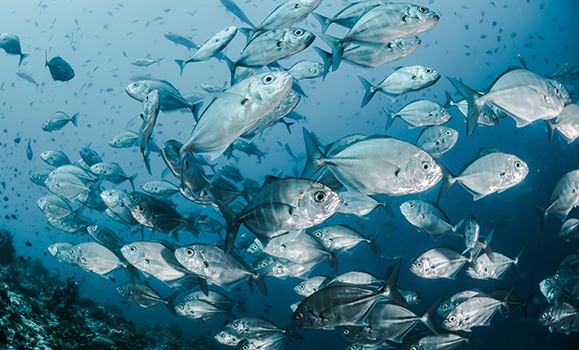Dalhousie University Researchers make portal of weird and wonderful fish sounds
Lurking beneath the ocean surface is a little-known chorus of sounds made up of everything from the grunts of a Bocon toadfish and the cough of an alewife to the rasp and ticks made by sablefish.
They are the surprising, yet distinct communications of a range of fish species that are not well chronicled or understood, despite their ability to provide critical information on habitats and which fish are occupying them.
To address that knowledge gap, an international team of researchers developed FishSounds, an online portal that lets users search through the first global inventory of fish sound information and a growing catalogue of recordings. They hope it will enhance the understanding of fish behaviours, help track invasive species and monitor the marine environment’s ecological health.
“FishSounds provides underwater acoustic researchers with a summary of everything the scientific community knows about whether a fish species makes noise, without requiring them to read through pages of text to find the answer,” says Sarah Vela, senior data manager with Dalhousie University’s MERIDIAN research group and lead developer on the innovative tool that brings the underwater soundscape to both academics and the public.
Recommended reading: Massive global fishing footprint captured in detail for first time
Visualizing sounds
The team, from Dalhousie University, the University of Victoria, the University of Florida, Simon Fraser University and Universidade de São Paulo in Brazil, recently outlined its work in a new paper and also updated the website.
The latest version adds a new visualization that includes statistics about fish species and the sounds they make on a map, using colour to show trends like how fish are more talkative nearer the equator and the Atlantic is more communicative than the Pacific Ocean.
The authors caution that there’s much more to discover, and insufficient research in the southern hemisphere and freshwater systems can skew statistics. Still, says Vela, visualizing the data can help identify exactly these holes in existing research, and seeing data on a map helps inspire different questions than seeing it in text or tables.
“Underwater sounds are a vital part of marine and freshwater ecosystems, and now we know that almost 1,200 species of fish contribute their distinctive sounds. Fish are the largest group of sound-producing vertebrates and have the greatest diversity of sound production mechanisms, but despite this, there was no inventory of all the fish species known to make sound and the types of sound they produce,” says Audrey Looby, a doctoral candidate at the University of Florida who conducted a systematized review of literature in the field.
Co-author Kieran Cox of Simon Fraser University says this data will improve our knowledge of the contributions fish make to soundscapes and examine which species may be most affected by noise pollution.
An avid scuba diver, Dr. Cox remembers his first dive when the sound of parrotfish eating coral resonated over the reef.
“It’s thrilling to know we are now archiving vital ecological information and making it freely available to the public. I feel like my younger self would be very proud of this effort,” he says.

